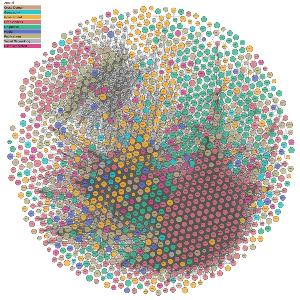What is Knowledge Representation?
Knowledge Representation (KR) is the science of describing a specific domain using a logical language that both humans and computers can understand. In KR, we develop models called ontologies. These ontologies conceptualize a domain by defining:
- Classes: Types of entities within the domain.
- Properties: Relationships linking these classes.
Ontologies and Knowledge Graphs
Ontologies serve as the structural foundation for Knowledge Graphs, which organize data into triples (subject, predicate, object). Typically, subjects and objects belong to specific classes in an ontology, while predicates are the properties that connect them.
Ontologies are dynamic and versatile. They can be combined and aligned with other ontologies, enhancing their utility and interoperability.
Ontologies are written in OWL (Ontology Web Language), an open-source format known for its interoperability and reusability. This makes ontologies ideal as structural backends for Knowledge Graphs and crucial for creating and linking Linked Open Data (LOD).
Our Focus on Cultural Heritage
We excel in representing cultural heritage data by:
- (re-)Digitizing Collections: converting physical collections into digital formats or re-engineering and enhancing existing digital collections using LOD.
- Creating or Selecting Ontologies: ensuring we always have the most suitable ontologies to describe our data.
- Releasing Linked Open Data: following Semantic Web principles, we ensure we release our data in LOD.
The Semantic Web
The Semantic Web is a specialized web segment where pages contain structured data about entities linked together through specific properties. This interconnectivity enhances data discoverability and usability.

